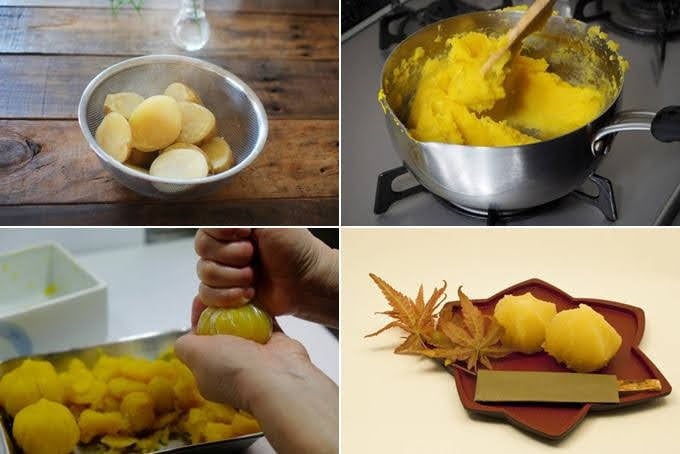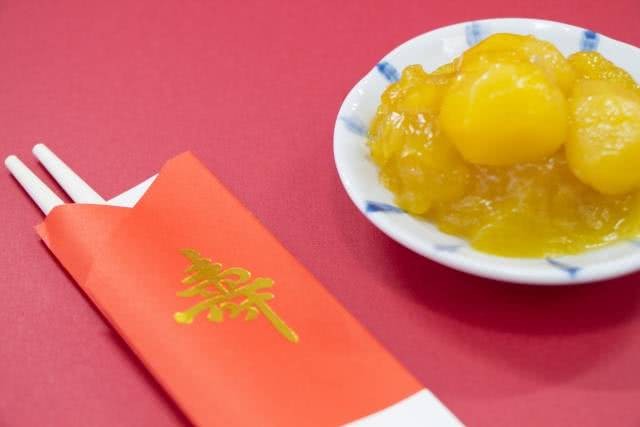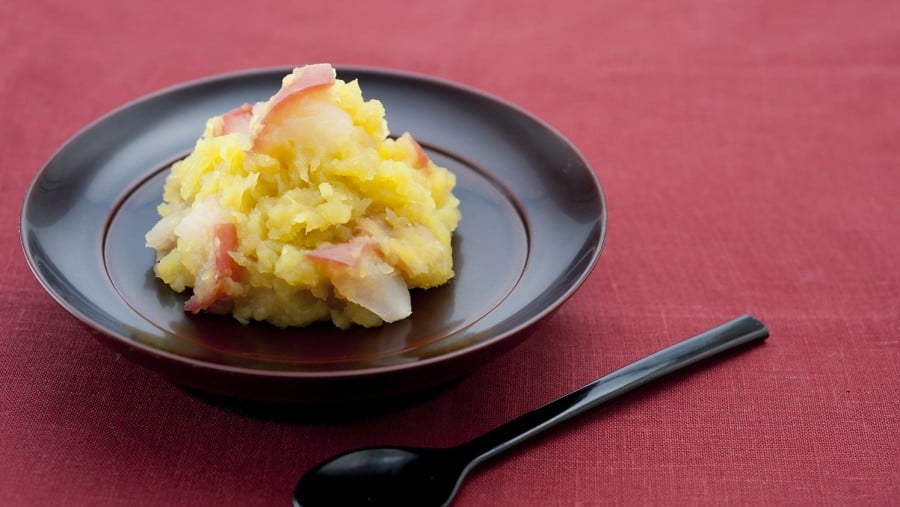In five thousand years of civilization, human societies worked with all kinds of raw materials to make subsistence items. Born in the set of islands that make up Japan, the kinton is one of the stars of celebratory cooking.
Even commemorative dates have been present in the calendar since the first records of highly organized human societies, in the era of the emergence of agriculture. Since then, these parties are filled with art and gastronomy.
Culinary variation primarily depends on the region where each recipe is located. This is because the fruits, vegetables, roots, grains and animals available are different depending on the space where a nation is established.
The era of commerce at the global level allows for an unprecedented scenario in human historiography; the ability to find native foods from any region in a supermarket basket of any major metropolis.
Despite specific traditions, some festivities are shared in all parts of the planet, with their due adaptations. One of these is the New Year, party held between the last day of a year and the first day of the following year in the calendar.
The celebration of the new year is closely linked to food. In agrarian societies, this festival meant the passage from one planting period to another, where the good harvest was celebrated by the population.
A good harvest represented the coming of a time of hope and plenty for the country, given the effort expended in soil survey, planting and monitoring these foods, so important for the well-being and survival of entire families.
In this way, the link between New Year and gastronomy was forever tied. In the post-industrial era, the festivity displays a wide range of candy recipes, snacks and drinks as diverse as their continents.
Kinton is a very common sweet on the Japanese table at New Year's, derived from a kind of sweet potato called “Satsumaimo”, a soft and thin-hulled root, lilac in color and a yellow interior, in a more intense tone than the common sweet potato.
This root contains a higher concentration of sugar, making it ideal for sweet creams and purees. Also used in the preparation of soups and cakes, Satsumaimo is the star that gives the face and color of Japanese candy.

Índice de Conteúdo
Understand more about the origin of Kinton
Kinton, also called “kuri-kinton”, is part of the set of Japanese sweets that together bear the name “Wagashi”, the traditional confectionery that transforms sweets into artistic expression.
Carefully shaped, the establishments that offer the sweets in this category keep the art printed in their forms, each sweet and color portraying a season of the year. These sweets are appreciated at weddings and family events in general.
In the ancient imperial period, they were served at meetings of the aristocracy, accompanied by a tea from the region, derived from the leaves that also gave rise to the famous green tea, widely consumed in the West.
The Wagashi confectionery was also present in local religious ceremonies, where sweets were offered to deities in ceremonies in temples across the country. Kuri-kinton, in particular, was relegated to New Year's meals due to its intense yellowish color.
Representative of the desires for prosperity and fortune, Kinton gains this color thanks to the sweet potato used and the addition of dry gardenia husks, used as a natural color enhancer for this and other foods.
One packer gets extra work in the New Year period with the intense sale of “Osechi Ryori”, a decorated wooden box filled with traditional delicacies of the period, including kuri-kinton.
The sale of these boxes is due to the tradition that prohibits families from cooking during the New Year. The foods that will be eaten at the first Japanese meal, from which the name Osechi Ryori comes, are prepared on the eve of the festival.
A tourist guide, the first meal of the New Year is tasted with chopsticks with a rounded tip, different from the chopsticks used in other months. The colors and aspects of each meal carry a special meaning, full of wishes for the coming year.
Kuri-kinton figures among other dishes as a symbol of fortune and prosperity, accompanied by recipes that symbolize good omen, longevity, happiness and wisdom. Counting 15 foods, they gather nutrients from a supermarket basket.

See what ingredients are used
Kinton is considered a simple recipe, containing a maximum number of three ingredients. Despite the strong sweet taste and presence on the spectrum of Japanese confectionery, kinton is not considered a dessert.
The realization of the recipe, in general, involves the use of the following products:
- Satsumaimo, the Japanese sweet potato;
- Kuri-no-kanroni, a kind of boiled chestnut;
- Kuchinashi-no-mi, dried gardenia bark;
- Mirin, one of the top three Japanese spices.
Satsumaimo, this kind of sweet potato, is eaten in Japan in early autumn. Roasted, boiled or fried, the root turns yellow on exposure to heat. Described as sweeter, drier and fibrous than regular sweet potatoes, it forms a nutrient-rich meal.
Due to its high rate of slowly digesting carbohydrates, the root provides a feeling of satiety and a great source of energy, being historically consumed by manual workers in rural Japan.
Kuri-no-kanroni is a medium-sized nut cooked and soaked in a simple broth, available in preserve jars in Japanese supermarkets. Nuts can also be found in their fresh form at fairs specializing in imported products.
Despite the difficulty in finding products outside its sales area, the logistics of dedicated transport allows kuri-no-kanroni to be found in Japanese markets and stores.
Kuchinashi-no-mi is applied in Japanese cuisine as a colorant for rice and sweets that need to show a yellow color. The ingredient is placed in the water where the food will be cooked, adding shades of yellow to orange depending on the concentration.
To avoid the presence of solid pieces of husk in the food, it is wrapped in gauze, tied in a small bundle and dipped in the liquid.
Finally, mirin is the base of the Japanese seasoning, together with soy sauce and dashi. With a slightly sweet taste, the liquid adds shine, flavor, aroma and a golden color to foods. In kinton, it highlights the so characteristic color that refers to gold linked to wealth.

Now comes the best part: know how to prepare
Kinton is prepared by cooking the ingredients in water. Sweet potatoes are the first stage of preparation, cooked in a pressure cooker to reach a point where they are soft enough to become a puree. The process can be manual or mechanical.
Sweet potatoes should be peeled and cut into small pieces, such as slices or cubes. Kneaded to the point of puree, the potatoes are brought back to the fire to mix with the preserved chestnuts, in a mass that can be styled.
The gardenia bark dye is extracted from the gauze through a twist, such as a rotary sieve. In this second stage of cooking, the kuri-kinton already has characteristics similar to its final result. Some versions add apples.
Mirin is added with salt to balance the flavor. The amounts of ingredients used vary according to the servings produced. Four servings of kinton require between 300 to 500 grams of satsumaimo, translating to 2-3 units.
The amount of sugar depends on the judgment of the person responsible for the preparation, varying between seventy grams, a value that can be reduced or increased, taking into account the concentration of sugar in the other components of the recipe.
The use of hand tools can guarantee a greater level of softness and uniformity to the puree, although it is not a mandatory resource. Gastronomy instruments act as a alignment machine to generate a more refined finish.
The article is still halfway through, but we recommend also reading:
Understand the importance of satsumaimo
Satsumaimo plays a special role in the history of the Japanese people. The local root variation is sold in its roasted form throughout the winter. Its preparation in heated gravels instead of common ovens accentuates the sweet potato flavors.
The origin of this tradition can be traced back to the Edo imperial era, in the mid-1600s to 1800s, built from a great period of famine in the country. The sweet potato, baked in sheet bending, spared the country from a greater tragedy.
Satsumaimo plantations in the regions that now correspond to Tokyo and surrounding areas have saved the lives of thousands of families. Since then, the link between Kinton and its symbol of prosperity and affluence has been stronger than ever.
So important to the local culture, excursions to satsumaimo plantations are carried out by kindergarten students in Japanese schools, where children are invited to get to know and participate in the harvest.
Well, now, the importance of this Japanese sweet, as well as other foods in the culture of this people, has certainly become clearer.







